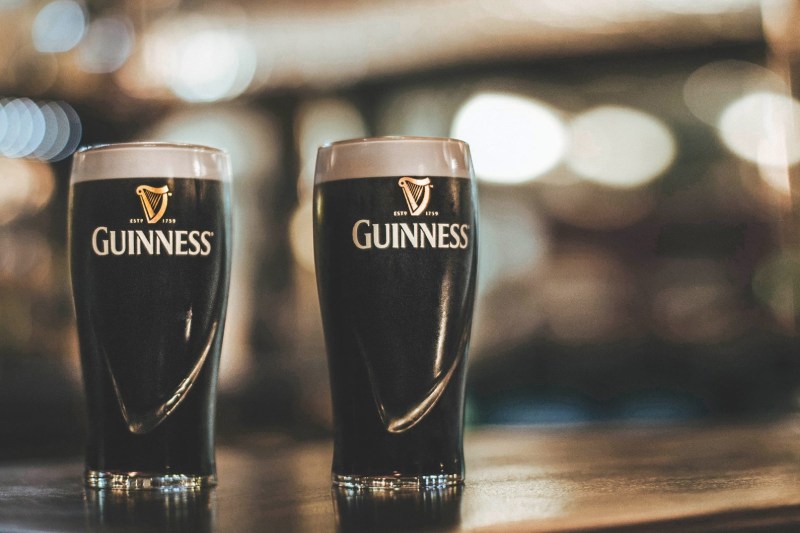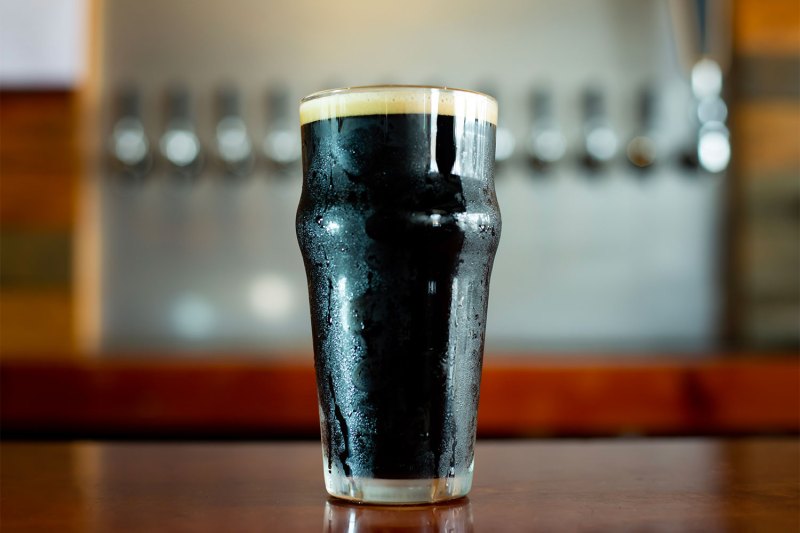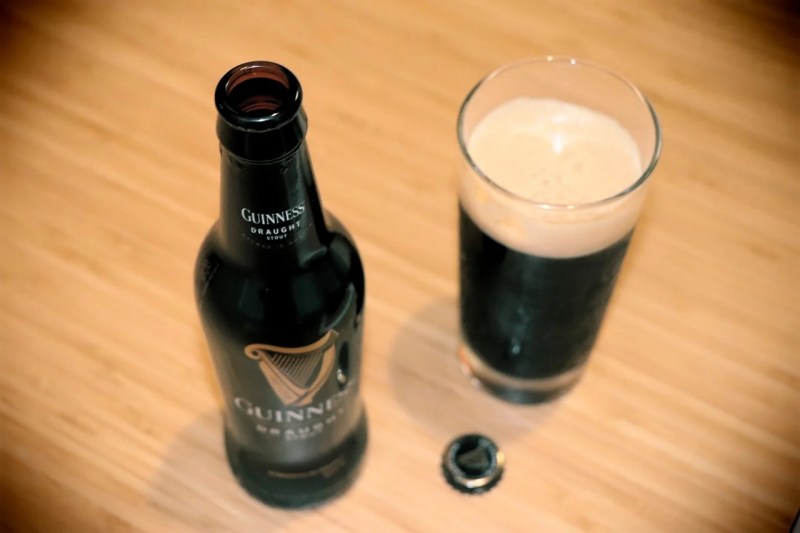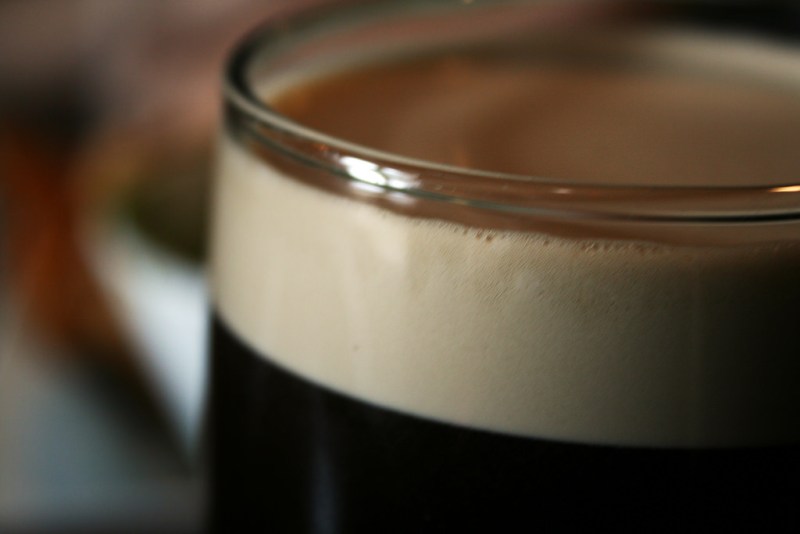
Even if beer is a foreign concept to you, you’ve probably heard of Guinness. The internationally renowned Irish outfit, launched by Arthur Guinness in 1757, is responsible for some of the most popular beer on the planet.
Since its founding over two centuries ago in 1757, Guinness has grown to exceptional fame. The brewery is primarily known for its stout, available just about everywhere, and it is extra lauded each St. Patrick’s Day. Two of the brewery’s most popular dark beers are the Extra Stout and the Draught, which begs the question: Guinness Extra Stout vs. Draught — which is superior?
We had a little head-to-head competition between the two iconic beers to see which is in better form these days. Here’s what we found out.

Guinness Extra Stout
The stately elder of the two, Guinness Extra Stout, is based on a recipe from 1821. This flagship Guinness beer remains what pretty much every other release is based on. It’s a classic, and generous on the nose with pronounced malted milkshake notes. The flavors are pleasantly even, made up of cacao, nutty notes, cola, molasses, and even a pinch of fruity esters.
The beer finishes elegantly, like a sip of coffee after a nibble of a chocolate chip cookie. What’s perhaps most remarkable about it is that it boasts all of this while showing a fair deal of restraint. It’s stout for every day of the year, whether it’s brisk outside or you’re camped out next to the air conditioner.

Guinness Draught
Guinness Draught, while a newer creation (concocted back in the mid-20th century), probably has the bigger following. This is the beer you’ve likely seen the ads for or tried yourself, served in the distinctive can (or draft handle) and lauded for its pillowy texture. This nitro-style beer sacrifices carbonation for a silky texture. The foamy head is a thing to behold, full of micro bubbles that never seem to subside.
The aromatics are mild, showing a bit of baking chocolate and espresso. On the palate, it’s a creamy, albeit linear profile, that finishes bitter, like black coffee. All told; it’s an easy sipper, but rather, a one-dimensional experience. Granted, I’ve never fallen in love with a nitro beer, but still, this seems like more of a beer you would have after a nice sip of bourbon or an Italian amari than a standalone pint.

The victor
While there’s no denying the mouthfeel that Guinness Draught affords, the Extra Stout boasts more complexity. Hats off to the Draught for popularizing the nitro approach. It’s a versatile beer that’s easy to enjoy and fun to cook or mix with (try it with a shot of espresso or a scoop of gelato). Yet, that makeup is both the beer’s blessing and its curse.
The Extra Stout simply is what it is; a crisp and bittersweet stout does not take shelter under a veil of creaminess. Instead, it’s just a well-made stout, where the grain bill really comes through and there’s balance throughout. While it is stout built for the dreary Irish winters, Guinness Extra Stout is not overly driven by its grain bill. The malt and barley shine, but the beer remains refreshing, which is a far cry from, say, an imperial stout and still pleasant during a summer evening.
It’s hard to go wrong with either of these wildly popular beers from Guinness. But after a taste test, we’re reminded that while the Draught is unique, it’s as much (if not more about) the sensation of the beer on the palate as the substance. The Extra Stout is a bona fide classic and offers more in the way of character. Tastes change, this much we know, but right now, we prefer the Guinness Extra Stout to the Guinness Draught.

How to drink Guinness like an Irishman
Now, the best way to drink Guinness like a true Irishman is to be at a pub, in say, Dublin or Galway, and have the bartender pull you a perfect pint from the tap and savor that rich, creamy head. But since heading to Ireland can get expensive each time you want a beer, you will more likely enjoy your Guinness at your local pub or at home out of a bottle or a can.
How you drink your Guinness depends on how you get it. If you’re in a bar and they have it on draft, that’s easy. Pick up the glass and drink. But what if it’s in a bottle — should you pour it into a pint glass first?
The answer is no, don’t ever pour a bottle of Guinness. According to Vinepair, the Guinness bottle is specially designed to recreate the experience of drinking a draft. Each bottle comes with a small device called a “rocket” that releases gasses as you drink the beer to help create an experience equal to drinking a fresh pint drawn right from the tap. Pouring out a bottle of Guinness renders this “rocket” moot, and without it, you’ll get a lifeless glass of beer.
So, when you pop open a can of Guinness, you should feel free to just drink it down, right? Nope. You need to pour it into a (preferably chilled) glass first.
Similar to bottled Guinness, the cans, which should be served cold, also have a small device inside. But unlike the “rocket,” the cans have a little plastic widget shaped like a ball that releases pressurized nitrogen when the can is opened, which allows the beer to have a head when poured.


